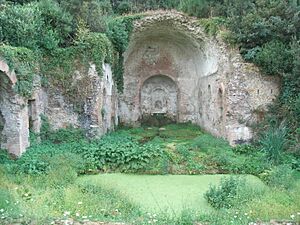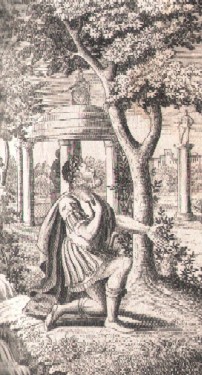Valerius Antias facts for kids
Valerius Antias was an ancient Roman historian who lived around the 1st century BC. He was known as an "annalist," which means he wrote a history of Rome year by year. Although none of his full books still exist today, we know about his work from small pieces mentioned by other ancient writers.
Historians believe he wrote a very long history of Rome, possibly in at least 75 books! Another famous Roman historian, Livy, often mentioned Valerius Antias as one of his sources.
Contents
About Valerius Antias
We don't know much about Valerius Antias's personal life. Historians think he came from a family called the Valerii Antiates. This family lived near a place called Antium in ancient Rome.
He likely lived around the time of Lucius Cornelius Sulla, a powerful Roman general. Some experts, however, believe he lived a bit later, perhaps around the time of Julius Caesar. Valerius Antias was considered one of the most important younger annalists of his time.
His Historical Writings
Valerius Antias's work, sometimes called annales or historiae, covered Roman history from the very beginning. It started with the founding of Rome and continued up to at least 91 BC. His second book talked about the legendary Roman king Numa Pompilius.
He wrote much more about recent history than about ancient times. For example, his 22nd book discussed an event from 136 BC. This shows he focused more on events closer to his own time.
How Reliable Was His Work?
Valerius Antias's writings were not always completely accurate. The historian Livy often criticized him for exaggerating numbers. For instance, Antias would sometimes claim huge numbers of enemies were killed or captured in Roman wars. He even seemed to invent some battles!
However, sometimes his numbers were correct. We know this by comparing his writings with those of another historian, Polybius.
What He Wrote About
In his history, Valerius Antias described each year in detail. He wrote about how troops were assigned and how provinces were managed. He also included important signs or omens, battles, and the founding of new Roman colonies.
At the end of each year's description, he would report on plays, temple openings, and other news. He especially focused on events happening in the city of Rome itself.
His Writing Style
Valerius Antias wrote in a way that was meant to entertain his readers. He used a style influenced by Greek history writing. This meant his stories were often long and filled with exciting, dramatic details. He would add these details to the shorter accounts of older historians.
He also included many legends and miracles in his work. For example, he wrote about the discovery of King Numa's books. He said the books were found when rain uncovered their coffins, rather than through digging, as older stories claimed.
Sometimes, he even changed facts to make his own family, the gens Valeria, seem more important. He might have invented high offices or great deeds for his family members who lived in the early Roman Republic. This was easier to do because there were no strong records from those very old times.
His writing style was simple and not old-fashioned. However, another Roman writer, Marcus Cornelius Fronto, thought his language was not very appealing. Because of this, later writers did not often quote him directly.
His Influence on Livy
For a long time, many historians thought that Livy, another famous Roman historian, used Valerius Antias as his main source. This was especially believed for the first ten books of Livy's History of Rome, which cover the legendary early history of Rome.
However, a historian named A.A. Howard studied this idea closely. He compared the pieces of Antias's work that we have with Livy's stories. Howard found that there wasn't much proof that Livy relied heavily on Antias in those early books.
In fact, for many events from that period, Livy either didn't mention Antias's information or openly disagreed with it. For example, Antias wrote that a woman named Acca Larentia gave her property to Romulus. Livy, however, doesn't mention this at all.
Another example is the story of the Sabine Women. Antias claimed exactly 527 women were kidnapped. Livy simply said the number was "greater than 30," without giving an exact figure.
Howard concluded that Livy did not just blindly follow Antias. Livy often disagreed with Antias's statements or simply ignored them. Out of 33 fragments of Antias that Livy mentions, Livy disagreed with six, criticized eleven, and quoted Antias to argue against him in ten cases. This shows that Livy was careful and often critical of Valerius Antias's work.
See also



